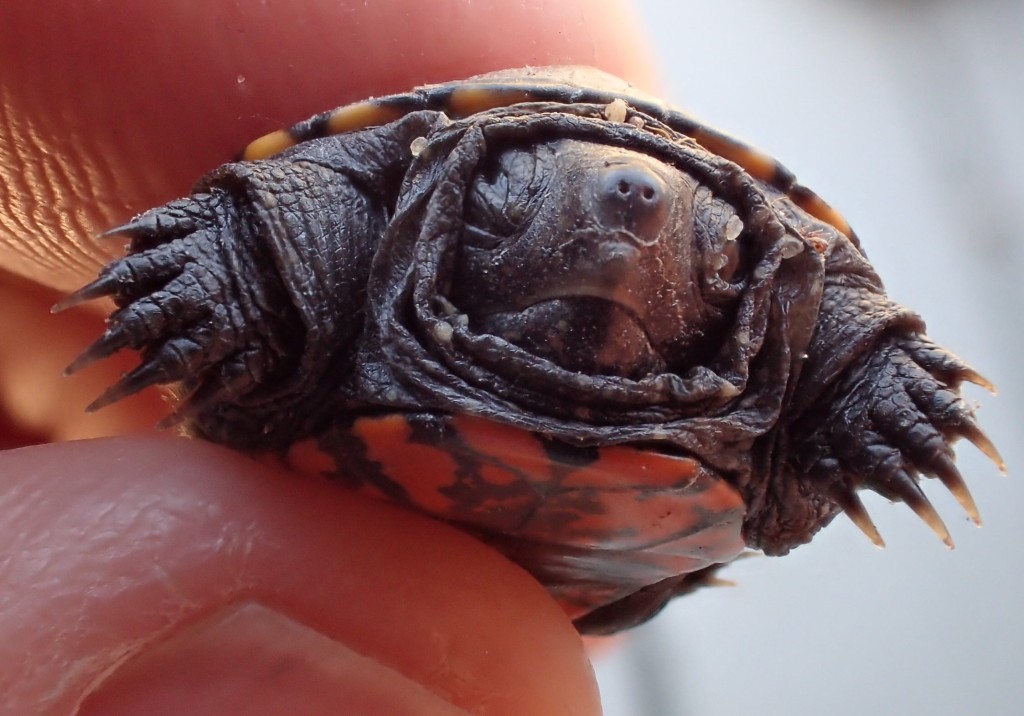Turtle on the federal endangered species list, but not here
By Steve Eisenhauer, Regional Director
The red-bellied turtle is a threatened species in Pennsylvania but in New Jersey it is quite common. Each spring at our Harold N. Peek Preserve we see these dime-sized babies making their way to the water. Although the majority of these hatchlings are believed to hatch and emerge from the ground in late summer, some overwinter in the nest chamber and emerge the following spring. Here is one of a few that were found on April 1.

The red-bellied turtle (Pseudemys rubriventris) is the most commonly seen turtle at Natural Lands Trust’s Peek Preserve, mostly due to its large size (up to a foot long and 10 pounds as adults), its tendency to sun itself on logs, and its springtime overland trips to lay eggs. Central New Jersey is the northernmost range of this species, with one exception being a population 250 miles away in one Massachusetts county. This Massachusetts population numbers in the hundreds, and merits federal endangered species protection. Many scientists believe that, perhaps hundreds of years ago, the two populations were connected, but habitat changes and collectors (primarily for food and pets) created the gap between the two populations. In Pennsylvania, this turtle is found only in the state’s southeastern corner, and is listed as a state-threatened species.
Evidence of turtle nests is found at the Peek Preserve, particularly in late summer and fall in areas within 100 yards of the Maurice River. Many are red-bellied turtle nests, but box, musk, mud, red-ear, and painted turtles also lay eggs in the area. Torn above-ground eggshells indicate a predator (most likely a fox, raccoon, or skunk) has made a meal of the eggs by digging them out. Turtles that hatch alive typically leave their eggshells underground, but then have to deal with the many hazards of life in the wild The dime-sized red-bellied turtle hatchlings are a tasty morsel for many land animals. If they make it to the water, a wealth of hungry fish and bird species (particularly Great Blue Herons) will be waiting for their arrival.
Although most red-bellied turtles hatch and emerge in late summer and fall, some hatch and remain in the nesting chamber until the following spring. It’s always a treat to see them making their way to the water in April, although it’s also humbling to pick them up and help them to their destination: the half-mile wide Maurice River which, in early spring, is essentially devoid of vegetation and other protective cover. It’s surprising any survive at all.
See more photos of these turtles in our slideshow:
Photos by Steve Eisenhauer, staff member.
